The Game Boy Advance (GBA) boasts an extensive library of games that possess an enduring and timeless appeal. Within this collection, there lies a selection of games that not only withstand the trials of time but also remain unparalleled in delivering their unique and distinctive gaming experiences. These standout titles have managed to etch their presence into the annals of gaming history, defying the passage of years and captivating players with their unmatchable charm.
Best game boy advance games still worth playing today
7. Gunstar Super Heroes
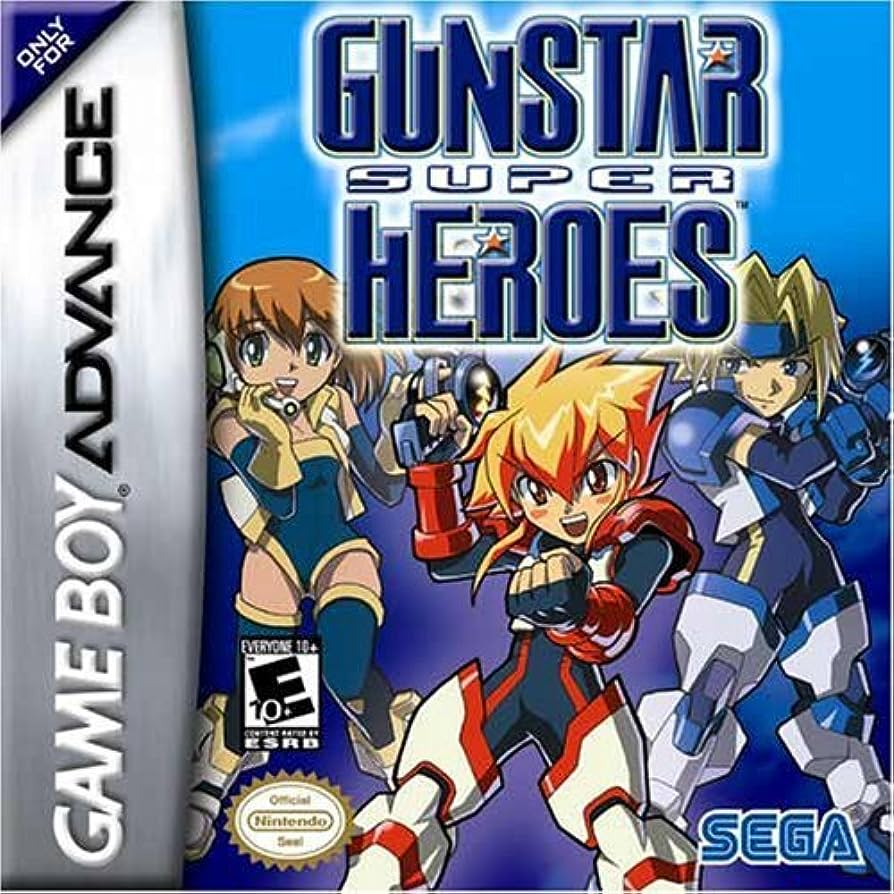
This sequel to the cult classic Gunstar Heroes on the Sega Genesis has never been replicated since. Developed by Treasure, this game showcases a wonderful blend of platforming action and shooting. It is now very rare to experience this type of game with good polish and not being marred by microtransactions inherent to the mobile platforms, not to mention the horrible touch-screen controls. If ever a game would be released in these modern times, it would be on mobile due to the inherent simplicity of the core gameplay. Although, some indie game developers have tried this genre to varying success.
Players are tasked with preventing an evil group known as “The Empire” from reuniting four stones that could awaken a great malevolent force. The fast-paced story unfolds with twists and turns, though the relatively short length limits character development. This is a shooter anyway, not a Jane Austen novel.
Gunstar Super Heroes employs fluid and engaging mechanics. Players can choose between two characters, each with distinct abilities, and select from three difficulty levels. The action-packed stages are filled with enemies and bosses, often leading to exhilarating explosions. A variety of guns and special attacks provide strategic options, while melee combat and vehicle sequences diversify the gameplay further. Despite its short length, the game has a surprising replay value.
The graphics showcase the GBA’s capabilities to the fullest, with fluid movement and intricate details in environments and enemies. The 3D depth of elements adds to the visual appeal, and explosions and other effects are particularly well-executed. Hence, even those who are graphics snobs will like this game a lot.
6. Konami Krazy Racers
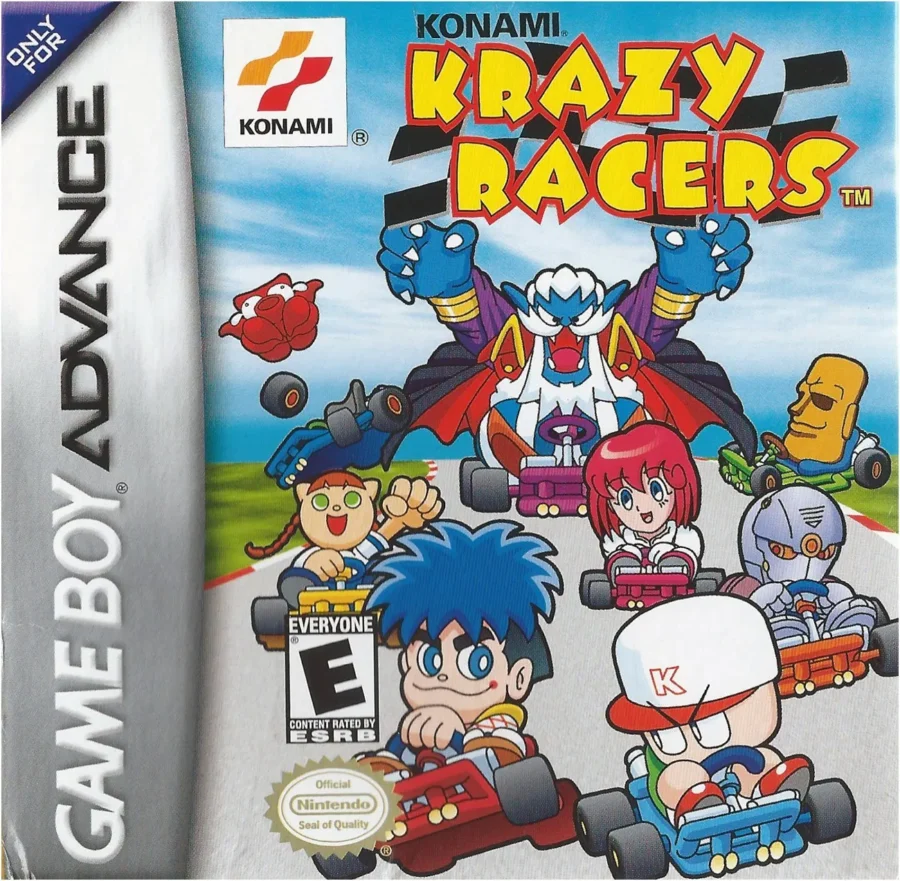
Another game that gamers will never experience again is a kart racer from Konami. Konami seems to forget that it is a video game company nowadays. In an attempt to outpace the impending release of Mario Kart, Konami ventured into the world of kart racing with Konami Krazy Racers.
However, despite this move, the game struggled to gain significant traction in the market due to its lesser-known characters, resulting in sales that fell short of expectations. But that is not a testament at all to the game’s quality, it is one of the best [insert game]-killers out there even if it failed to do that task.
Players are invited by Konami Man, a character featured in various Konami games, to participate in a race among Konami characters. The game’s emphasis remains firmly on the racing experience itself.
The game’s audio component scores well, with excellent music that resonates with both sad Konami fans and miraculously existing newcomers. Tracks like “Beginnings” from Castlevania and the Parodius theme offer catchy tunes that complement the gameplay. Character voices are also distinct. This game has such a high level of polish.
Konami Krazy Racers takes a different visual approach compared to Mario Kart’s attempt at 3D graphics, opting for a stylized, animated aesthetic. The gameplay is accessible and user-friendly, with straightforward controls for acceleration, reverse, item use, and jumping. The game boasts substantial replay value through numerous game modes, a license center option, a diverse cast of characters, catchy music tracks, 16 racing courses, and 8 mini-game tracks.
5. Pokémon Leafgreen / Firered
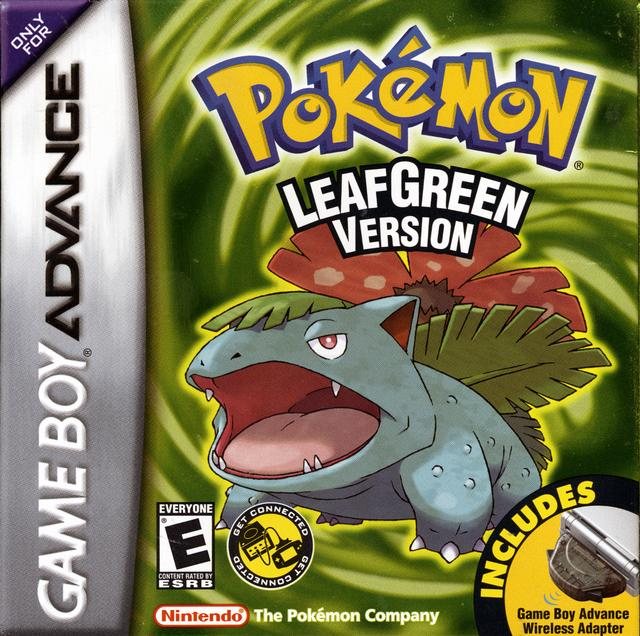
Looking back at the early days of Pokémon, it’s hard not to feel a wave of nostalgia for the simplicity and charm of the original Red and Blue titles. However, as time has marched on, so too has the Pokémon franchise, bringing with it a multitude of refinements and enhancements. Pokémon LeafGreen and FireRed a reimagining of the classic Blue and Red version respectively, stands as prime example of how far the series has come, offering a blend of cherished nostalgia and contemporary improvements that make it a must-play for fans old and new.
Leafgreen and Firered don’t confine players to the original 150 Pokémon just as their source material; they embrace a more expansive collection including all the Pokémon at the time of its release. Unlike the older versions, where leveling was the sole focus, the GBA generation introduced hidden factors called Effort Values (EVs). This mechanic adds depth to the training process, as your Pokémon gain points based on their opponents, influencing their stats as they level up. This isn’t just about raising numbers; it’s about sculpting the Pokémon’s strengths and abilities strategically.
The Pokédex is now larger and more user-friendly than ever, with added information and a new element: Nature. Nature has a subtle yet significant impact on your Pokémon’s growth, affecting specific stat growth patterns. This adds another layer of strategy to your training regimen, encouraging players to consider every detail when raising a Pokémon.
These games also bring numerous quality-of-life enhancements that make the journey smoother. Inventory organization separates Pokéballs, TM/HMs, and important items, avoiding clutter and allowing players to carry more essentials. The inclusion of shortcut options for key items further streamlines gameplay. Even if there are modern Pokémon games on the DS, 3DS, and Nintendo Switch, it is easy to go back to these titles due to the gameplay of both of these games being the baseline of modern Pokémon games.
4. Megaman Battle Network 2
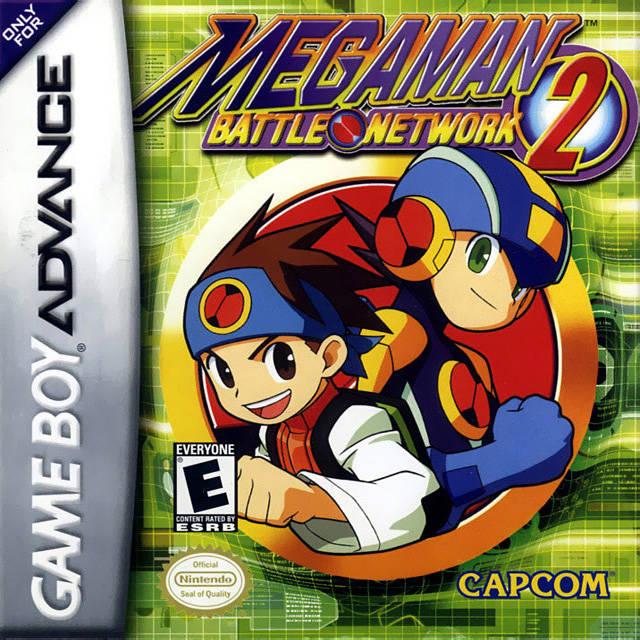
It’s been several years since the last Battle Network game was released. It seems like Capcom will never venture into making another Megaman RPG anymore. Hence, Megaman Battle Network is part of this list since nothing plays like this. Truly a one, unique experience.
In terms of gameplay, Megaman Battle Network 2 seamlessly blends traditional RPG exploration with action-packed battles. The battles are not just frenetic button-mashing affairs; they require strategic thinking and meticulous customization. As players confront viruses and malevolent Net Navis, they must consider a variety of tactics, exploiting the strengths and weaknesses inherent in different types of attacks and defenses. The extensive range of battlechips, coupled with the introduction of a style system, allows for an elevated level of customization. The cyber world, a central aspect of the game, boasts safe havens known as cyber squares, providing respite and opportunities for shopping and information-gathering.
The game’s replay value is impressive, boasting abundant post-game content, secrets, and side-quests. The possibilities for battling, customization, and exploration are extensive, ensuring that players can invest significant time in the game without running out of new challenges. Despite minor setbacks, such as its reliance on fetch quests, MMBN2 remains a captivating gaming experience, propelled by its fluid battles, dynamic customization options, and a wealth of features that appeal to both newcomers and dedicated fans of the franchise.
3. The Tower SP
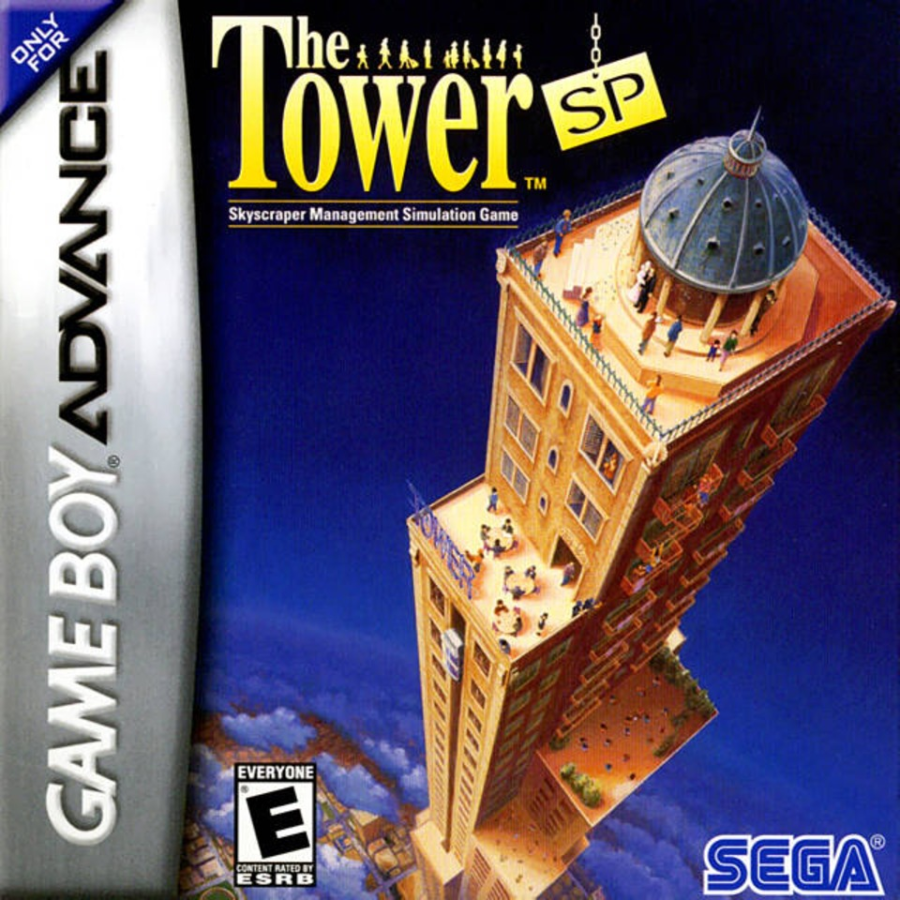
Vivarium, the masterminds behind the acclaimed Sim Tower, has managed to condense the towering experience into the palm of gamers’ hands with The Tower SP for the GBA. Whether you’re seeking respite from RPG fatigue or looking to indulge your inner CEO, this game offers an endorphin gland-massaging journey into the world of micro-management and architectural prowess.
In this simulation masterpiece, player-CEO dons the hat of an aspiring architect, meticulously building and managing a skyscraper filled with various rooms, each serving a specific purpose. From security centers to offices, players are tasked with keeping tenants content and pest-free, which, in turn, attracts more business to the burgeoning tower. It’s a game tailor-made for those who relish precise micromanagement—a playground for startup entrepreneurs.
Unlike the PC version, The Tower SP introduces mandatory additions to the room repertoire, including security centers, cleaning rooms, and recycling centers. Security centers deter break-ins, cleaning rooms combat pesky infestations, and recycling centers cater to the tidy tendencies of your tower’s inhabitants. Neglecting these aspects comes with its consequences, often manifesting as roach infestations.
There are still games like this. Tycoon, management, or simulation games are aplenty in mobile space. However, there is some stamina system to push players into purchasing gems or virtual currency. The Tower SP is just pure gaming gamers only buy once.
2. Riviera: The Promised Land
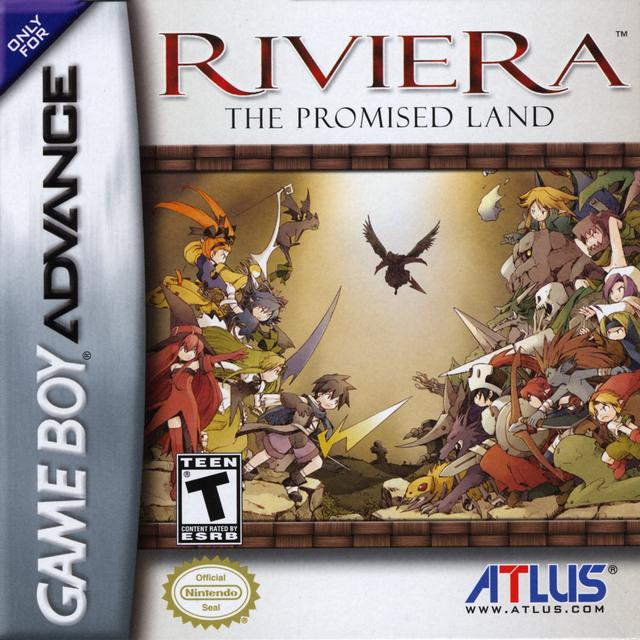
Any RPG player out there? Do certain elements of role-playing games start to ride the nerves? If an RPG that focuses solely on the fun aspects while discarding the rest is the one that is sought, Riviera: The Promised Land could be the revitalizing gust of wind dance.
Riviera: The Promised Land truly shines in its core gemplay that redefined the RPG experience and is still yet to be replicated or imitated. The game curates the quintessence of RPG entertainment while eschewing superfluous elements. The result is a refreshing stress-free RPG. Riviera employs an old-school platformer layout akin to classic Mario games.
The game is divided into stages, further segmented into areas and screens. Each stage comprises 8 obligatory areas and a concealed 9th one. A distinctive aspect lies in the incorporation of points akin to high-score achievements, a unique structure indeed. Its inventive features, from point-based progression to dialogue-driven choices, are not being emulated by modern JRPGs, and even if they are, it is either bloated or haphazardly put.
1. Golden Sun: The Lost Age
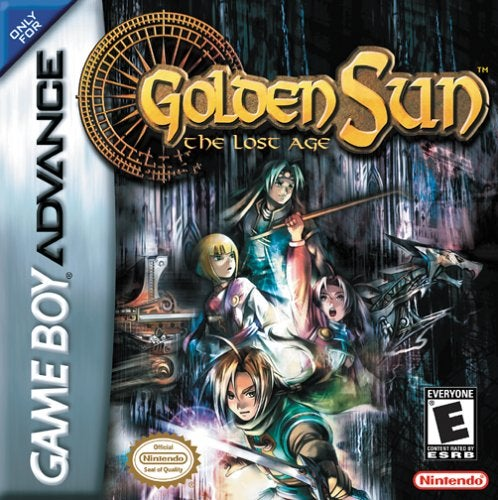
Golden Sun, and its sequel, Golden Sun: The Lost Age received incredible reverence from gamers when these games appeared on a platform with Final Fantasies, Zeldas and Metroid games. Having this kind of reputation only emphasizes how amazing these Golden Sun games are.
The Golden Sun games fit the stereotypical JRPG affair: children facing the end of the world, and somehow the former ends up as the victor. But the narrative of the games is everything but stereotypical. The twists and turns are crazy, players will be holding their breaths for sure.
Another aspect of the Golden Sun games that has yet to be replicated in perfection or at least in estimation is its combat system. The Djinn system is similar to Final Fantasy VIII’s GF system, but it is much simpler and rather effective and is not some needless bloat. What character and what Djinn are psynergized will make or break the battles.
The Golden Sun games also did not fall into the trappings of JRPGs where the traversal across the maps and dungeons is mindlessly boring. The dungeon crawling portions are puzzles themselves where each of the members of the party can contribute in unique ways to solving.
With its incredible core gameplay, and the degree of production values for a handheld game, Golden Sun still is one of the games that stood the test of time even without all the RTX, framegens, and DLSS of this generation.
